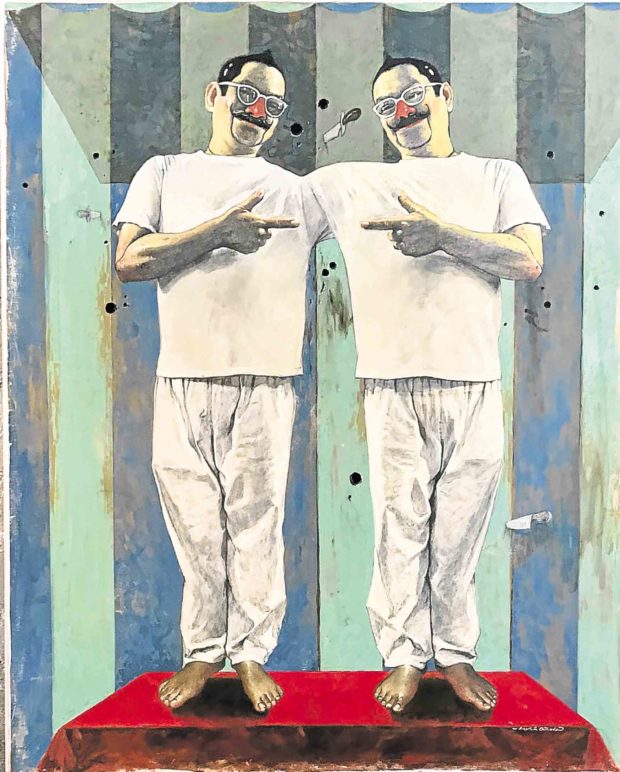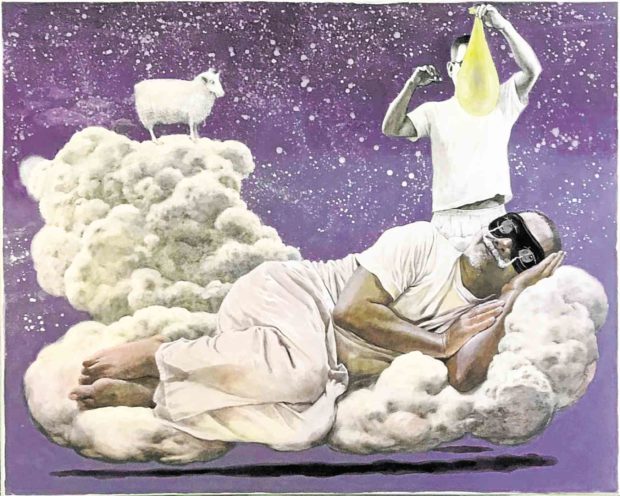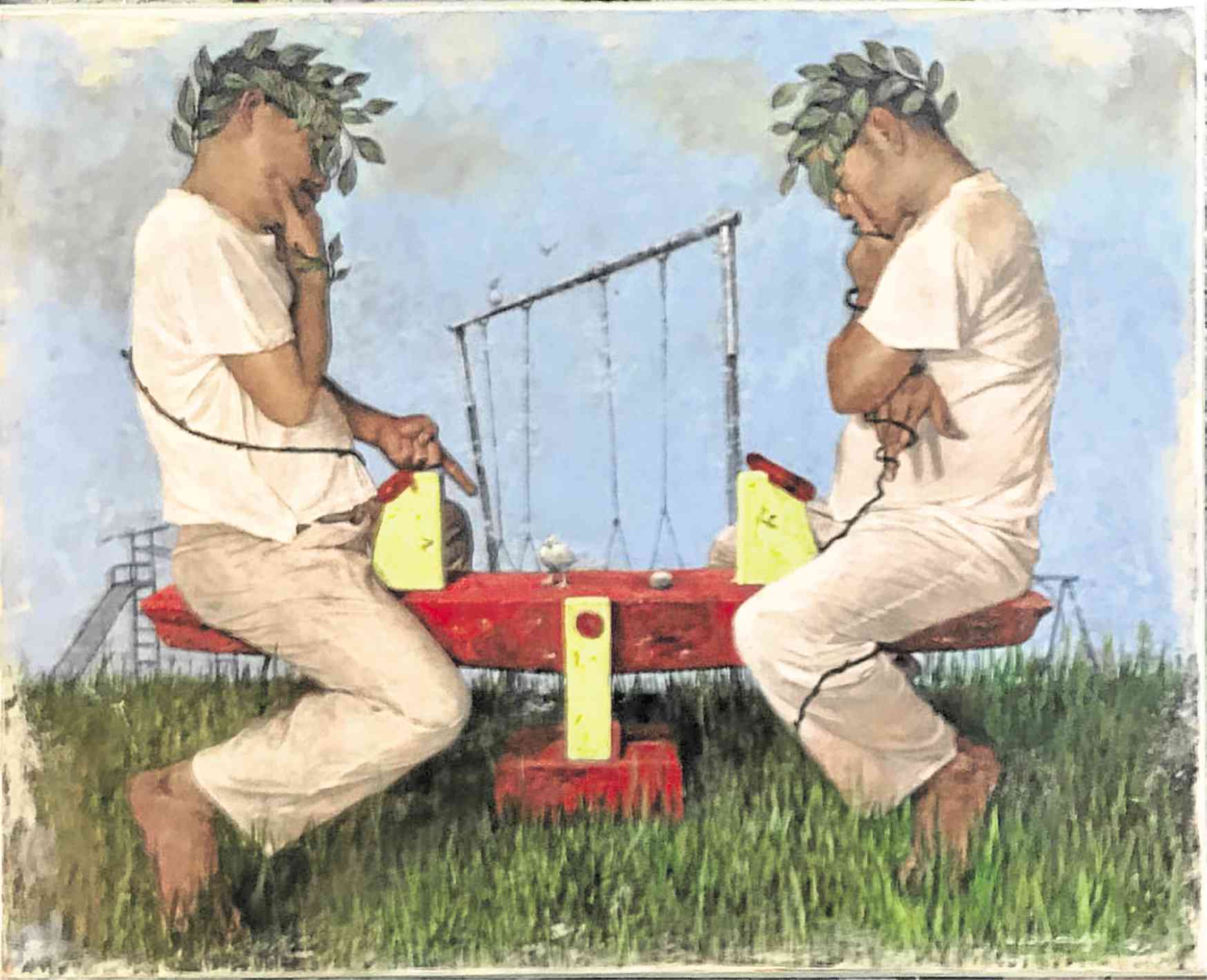
On view at Galerie Anna are the recent works of Toti Cerda in a solo show billed as “Hapi Tots.” Cerda is an acknowledged master watercolorist triumphing in the 25-year old competition Kulay sa Tubig. These are, however, acrylic works, and therefore are still water-based. The dominant tone of the show may veer toward the comic and the humorous, more so because, like Caravaggio, Cerda places himself in his own works as both protagonist and antagonist. To decipher which is which is not so easy a task, or in its sustained prankishness, who is the bida and the contrabida in the one persona of the artist. Call it “The Two Toti Cerdas.”
Cerda tackles the great themes of love and peace, and withal, the warring forces that shift back and forth like a tennis ball. In “Navigator,” one driver forges ahead while the other, astride the vehicle, points to the opposite direction. In “Debater,” the two Totis, seated on a seesaw in a face-off confrontation, argue over which came first: the chicken or the egg. In “Dreamer,” a slumbering Toti is borne sweetly aloft a bed of fluffy clouds, as the other Toti, mischievously hovering above him, is about to prick a water-filled balloon.

Visual vaudevilles
Chaplinesque in their animation, these works are visual vaudevilles, and were they to be videotaped, could easily include pantomime, slapstick turns a la Three Stooges, and a song-and-dance routine. Rendered as flesh-and-blood reality, Toti, with his bristling white crew-cut, moustache and goatee, masks the seriousness of his theme, “Man versus Himself,” via his droll and amusing antics. And thus, properly masked in “Puppeteer,” Toti and his Other Self, pointing at each other, inveigle the viewer into identifying the real puppet or puppeteer.
Like ‘Hamlet’
While one Toti accuses the other Toti as his private demon, the artist Toti Cerda bequeaths to us his philosophical thoughts, leaving us torn, like Shakespeare’s “Hamlet,” between action and passivity, and like Caravaggio’s David, recognizing the battle fought constantly within ourselves.—CONTRIBUTED










































